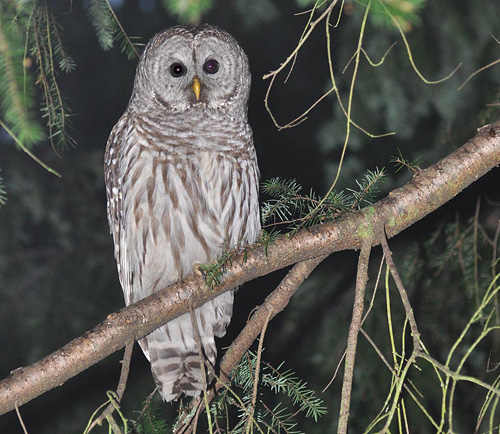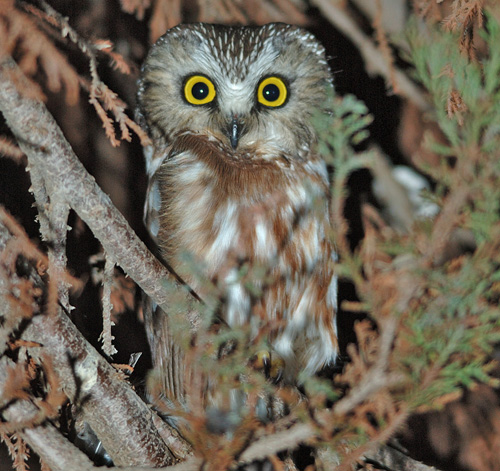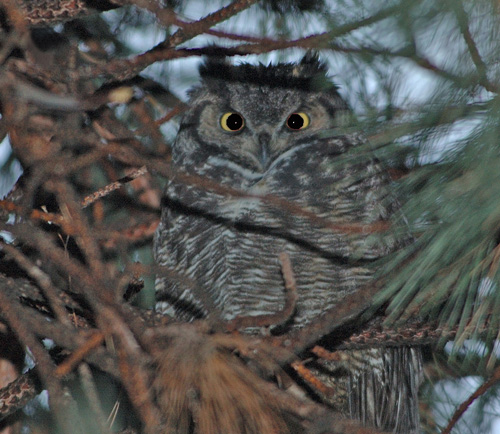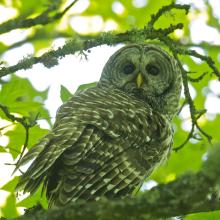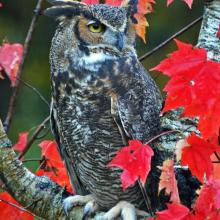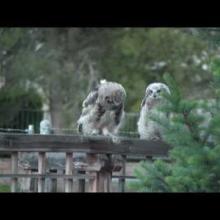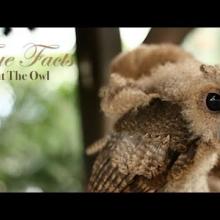

Join BirdNote tomorrow, November 30th!
Illustrator David Sibley and actor H. Jon Benjamin will face off in the bird illustration battle of the century during BirdNote's Year-end Celebration and Auction!
Birdwatchers in Washington State were recently commenting –- via the "Tweeters" email listserv -- about the increasing vocalizations heard from their local Barred Owls. Why are owls ramping up their territorial calls while most songbirds have already ramped down?
Bob Pearson, an owl researcher with 20+ years of experience in the Gifford Pinchot National Forest south of Mount Rainier, provided his observations.
I find all the owls vocal at this time of year. Since Great Horned Owls nest earlier, and Spotted Owls later, than Barred Owls, I would expect a progression of vocal "reawakening" for these species, but I find them all to start calling more in roughly the same time frame.
I think owls increase their vocalizations as they stop spending time and energy caring for their young. Territories shrink when the birds are taking care of juveniles, concentrating around the nest area. These areas tend to get depleted of prey. Adults can now move around more to find prey and can spend their time finding out what other owls are in the vicinity. The way to do this is to move around and broadcast their presence.
This time of year is also the best acoustically. Sources of outside noise -- such as streams -- are low. There are more likely to be inversions, which keep sounds near the ground and more likely to be heard at a distance. For those of us listening for owls, more owls can be heard simply because the conditions to hear owls are generally much better this time of year.
I also find more interplay between owl species this time of year, by which I mean I'm more likely to have 2 or 3 species calling at the same time. I am more likely to find the owls farther away from their nesting core areas, and sometimes find Barred Owls in adjacent Spotted Owl territories, while the Spotted Owls are in nearby territories for Barred. Great Horned Owls seem to be moving around more and I also find more Saw-whet Owls, with the "skiew" call seeming to be used more often.
Fall may be the best time of year, aided by the good acoustics, for the owls to re-establish boundaries and find out what may be new in a larger area. Testing the specific reasons for increased vocalizations isn't easy, and therefore all theories are educated guesses. Whatever the reason, this is a good time of year to be out listening for owls, and, as a plus, the nights are beautiful, quiet, and may offer the possibility of a shooting star or two.
Bob Pearson
Packwood, WA
On Cornell's All About Birds, listen to vocalizations of:


